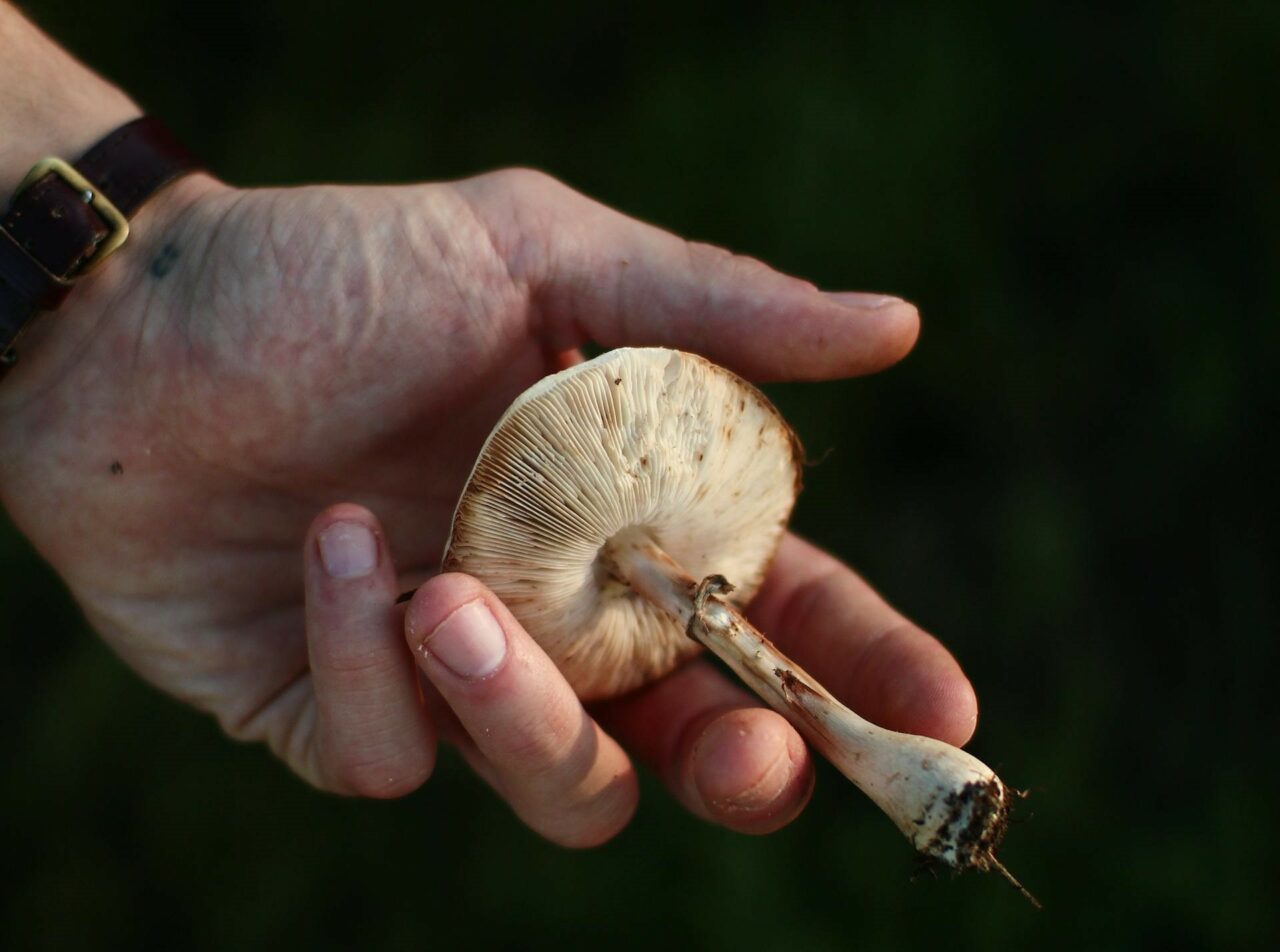Psilocybin mushrooms, akin to LSD in their role as a serotonin 5-HT2A receptor agonist, are a time-honored psychedelic. They are presently under investigation in the context of psilocybin-assisted therapy for various mental health disorders, including distress related to severe depression, anxiety, cluster headaches, and migraines.
In order to digest how shrooms alleviate these conditions, it’s essential to explore how they metabolize in the body. This knowledge equips both researchers and users to understand how the active compound stimulates psychological and therapeutic effects. This article offers a basic explanation of psilocybin’s pharmacology and pharmacokinetics.
[toc]
Key Takeaways:
- Half of the psychedelic fungi consumed orally is absorbed and disseminated throughout the body.
- The fungi compound undergoes dephosphorylation by the enzyme alkaline phosphatase, largely in the liver.
- Approximately 3.4% of the compound is eliminated in its original form within 24 hours, with the bulk being expelled as a stable metabolite.
What Does Pharmacokinetics Mean?
Pharmacokinetics (PK) is the examination of how the body processes substances, like drugs, upon their introduction to the system. It’s a distinct but related concept to pharmacodynamics, which explores how a compound interacts with your body. PK delves into four main aspects: absorption, distribution, metabolism, and excretion (ADME).
Understanding these processes enables healthcare professionals to recommend the most effective medications with the least risk. It also allows them to customize treatments to each patient’s individual physiology and lifestyle.
How Does Pharmacokinetics Relate to Psilocybin?
Psilocybin and psilocin, the primary active compounds in some species of magic mushrooms, have attracted significant attention among researchers and users. Pharmacokinetics studies how the body processes mushrooms that contain psilocybin and aids in understanding their potential impacts, whether medicinal or recreational.
These compounds go by several names, including “magic,” “psychedelic,” “medicinal,” or “sacred.” The fungi containing these compounds are consumed, with The varieties of mushrooms, their geographical origin, size, the growing conditions and drying process, as well as their age can significantly alter their potency.
Though these mushrooms naturally thrive in the wild, scientific advancements have made it possible to synthesize them in laboratories. Both the naturally occurring and laboratory-manufactured versions exhibit low toxicity levels, although minor side effects like nausea or vomiting may be experienced.
Despite these physical side effects, the compounds present in these mushrooms have demonstrated potential therapeutic advantages due to their safety and lack of addictive properties. Consequently, researchers are exploring their use in psychotherapy, particularly as a treatment for anxiety and depression.
The Four Phases of Pharmacokinetics
Psilocybin, the compound present in these mushrooms, is inactive in its native form and acts as a prodrug, turning into its active form, psilocin. Enzymes such as alkaline phosphatase facilitate this transformation, enabling psilocin to be absorbed and distributed throughout the body, reaching various tissues. However, after oral intake, psilocybin cannot be detected in the circulatory system, feces, or urine.
Absorption
Absorption refers to the process where the compound enters the bloodstream from the site of administration. This process affects the speed and effectiveness with which the compound reaches its target, such as the plasma. Oral administration is most commonly used, while inhalation has been tried, but it hasn’t proven as effective.
The absorption process also includes the release of the compound from the dosage form during oral ingestion. Factors like a delay in the throat or esophagus can influence this, potentially slowing the effects or causing discomfort. Once the compound reaches the stomach, the acidic environment could start to degrade it before it enters the bloodstream.
Studies on animals suggest that only about 50% of orally administered psychedelics are absorbed and disseminated throughout the body.
Factors Affecting the Absorption Process
Several factors can influence the absorption process, leading to variations in the onset, intensity, and duration of effects:
- Stomach Contents: Consuming the compound on a full stomach can delay the process as it slows the onset of effects. Absorption is faster on an empty stomach.
- Body Fat: Substances can accumulate in fat tissues, potentially prolonging their effects.
- Age: Metabolic rates and body composition often change with age.
- Zero-Order Kinetics: The substance is expelled at a constant rate, regardless of its concentration.
- First-Order Kinetics: The elimination rate is directly proportional to the drug’s concentration.
The effectiveness of this process depends on several factors, including the size, polarity, and protein-binding potential of the compound, as well as individual physiological characteristics such as hydration status and body composition.
The goal is to achieve an effective concentration at the desired location. To be effective, the substance must arrive at the target area, as determined by its distribution volume, and remain unattached to proteins, allowing it to actively interact with its receptor.
What Factors Affect the Distribution Process?
Several factors can influence the distribution process:
Effects typically begin to manifest between 20-40 minutes after ingestion, peaking around 80-100 minutes. The effects of magic mushrooms generally last between 4-6 hours.
How Does Distribution to the Brain Happen?
In preliminary studies on two species, it was found that the binding affinity sequence is 5HT2A > 5HT1A > 5HT2B [23]. It also attaches itself to dopamine D1, 5HT1E, 5HT5A, 5HT7, 5HT6, D3, 5HT2C, and 5HT1B receptors.
Psilocin acts as a partial agonist at the 5HT2A receptor, with a roughly 40% efficacy. Its psychedelic effects are believed to stem from its partial agonist activity at 5HT1A autoreceptors.
The perceived mood improvements and psychotomimetic experiences may be due to the noted correlation between increased dopamine levels and sensations of depersonalization and euphoria. Hallucinogens work by modifying neurochemistry and receptor activity. Psilocin enhances 5HT2A agonist activity by augmenting BDNF synthesis in the hippocampus, which promotes neurogenesis and reduces conditioned fear-related behaviors.
Elimination
Elimination refers to the process by which the The body expels substances, primarily through the kidneys, but also through the lungs, skin, or gastrointestinal tract. In the kidneys, a naturally occurring psychedelic drug is either filtered in the glomerulus or secreted in the tubules. The process is further complicated by some reabsorption.
The primary compound has an estimated half-life of 160 minutes, while psilocin’s half-life is about 50 minutes. Animal studies indicate that these substances are mainly excreted in the urine, accounting for about 65% within 8 hours of consumption. Small traces of the substance can be detected in bile and feces even after consumption.
In humans, approximately 3.4% of the substance is discharged unaltered within a day. The majority is excreted as psilocin-O-glucuronide, a metabolite with greater stability. The stability of this metabolite allows for the detection of the compound in urine samples over extended periods.
Substance excretion primarily utilizes two methods:
Most psychedelic drugs adhere to the first-order kinetics method, reaching steady-state concentrations after four to five half-lives. The complete elimination typically occurs after four to five half-lives as well.
Discover Our Range of Psychedelic Mushrooms
The metabolic process differs among various types of fungi. By buying from reliable online vendors like Mushroom Gummies Canada, you can prevent unintentional consumption of poisonous mushrooms. Certain kinds, like Agaric mushrooms, may result in intense and undesirable effects. Therefore, it’s essential to procure magic mushrooms from trustworthy sources rather than unverified street dealers or wild foraging.
| Feature | Enigma | Full Moon Party | Gold Member | |
| Strain Type | Psilocybe Cubensis OMNI | Psilocybe cubensis (Thai Koh Samui) | Psilocybe cubensis | |
| Potency | Exceptionally high; 3.8% tryptamine content | Moderate to high potency | High potency | |
| Visual Characteristics | Resembles a blob or | Resembles a cauliflower or brain | Typical cubensis look; moderately proportioned | Bulky white stalks; caramel-toned caps; visible blue discoloration |
| Effects | Deemed the most potent; induces intense effects | Powerful cerebral high; delayed onset with marked visuals | Strong visuals and joyous feelings |
Explore Psilocybin Mushroom Usage Online
Comprehending the pharmacokinetics of shrooms is crucial for healthcare providers, researchers, and users. This understanding allows you to make educated decisions about dosage and timing, thus reducing potential hazards.
Discover your perfect psychedelic experience at Mushroom Gummies Canada. Whether you’re looking for a soothing voyage or a deeper exploration, our varied product selection caters to your unique needs. Experience top-tier, safe, and quality-assured shrooms, alleviating worries about uncertain origins or harmful mushrooms.
Experience the best magic mushrooms Canada can provide and take your psychedelic adventure to new heights.
Frequently Asked Questions
Are there any known interactions between shrooms and other drugs?
Our products may interact with certain medicines, particularly those that affect serotonin levels, like SSRIs (Selective Serotonin Reuptake Inhibitors). SSRIs and SNRIs (Serotonin and Norepinephrine Reuptake Inhibitors) tend to reduce the effects, unlike non-serotonergic antidepressants. This reduced effect can last up to three months after stopping the antidepressant.
Do all psychedelics have the same metabolic pathway as psilocybin?
No, each psychedelic substance has a unique structure that requires different metabolic processes to activate, and they bind to various receptors in the body. The route of administration also affects each psychedelic’s absorption. While the fundamental principles of absorption, metabolism, and distribution are the same, the specific pathways and effects vary for each substance.
Can the form of the shroom affect the pharmacokinetics?
Yes, the form (whether fresh, powdered, or dried mushrooms) can influence the absorption rate. For example, powdered forms may be absorbed faster than whole dried ones due to faster dissolution.
Suggested Reads:





